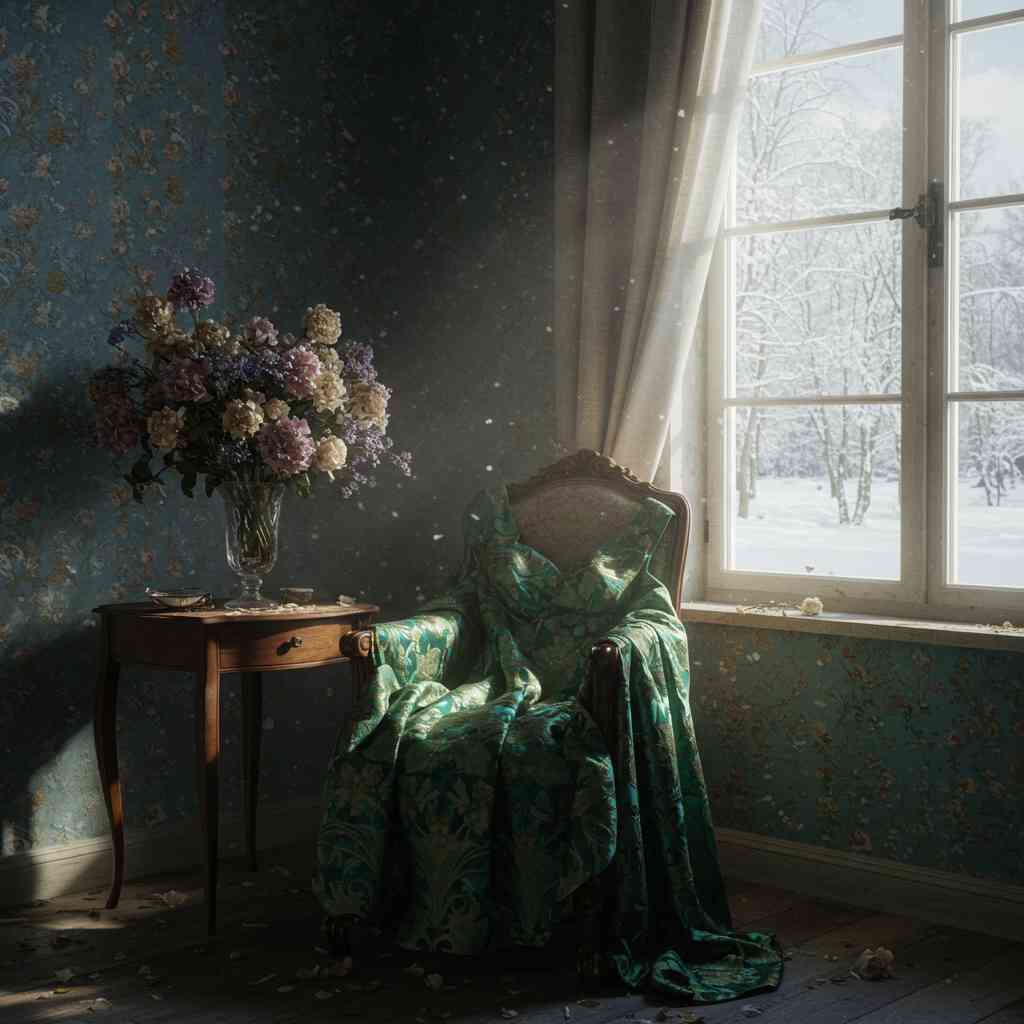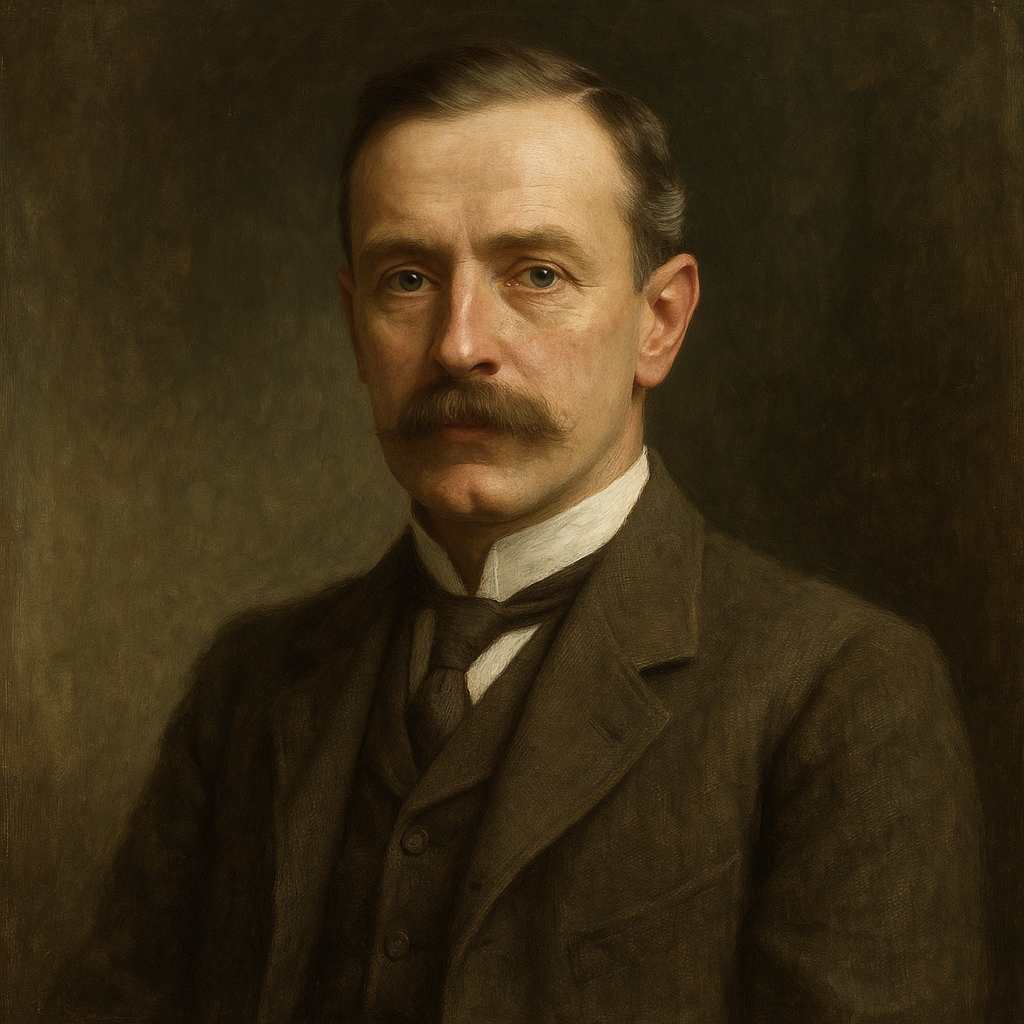If Flowers Had Ghosts
Patrick Reginald Chalmers
1872 to 1942

If flowers had ghosts, that thin perfume
Of buds long picked should haunt your room —
Your room that dreams in ancient way,
Where beaux have knelt with Spring's bouquet
For belles in silk of Jacquard's loom:
When wintry fields are bare of bloom
They'd come a-tremble from the tomb;
You'd love them when the skies were grey,
If flowers had ghosts!
So now, when April fires the broom
And cowslips clamber up the coomb,
You would not — this I greatly pray —
Forget the friends of yesterday,
Who spoke of her in days of gloom,
If flowers had ghosts?
Patrick Reginald Chalmers's If Flowers Had Ghosts
Patrick Reginald Chalmers’ "If Flowers Had Ghosts" is a delicate yet profound meditation on memory, loss, and the spectral persistence of beauty. Through its evocative imagery and wistful tone, the poem explores the idea that even in decay, the essence of what once was lingers—haunting the present like a fragrance that refuses to dissipate. The poem’s central conceit—that flowers might leave behind ghostly remnants of their presence—serves as a metaphor for the enduring power of memory and the human longing to preserve what time inevitably erases.
Historical and Biographical Context
Patrick Reginald Chalmers (1872–1942) was an Irish poet and writer whose work often reflected the aesthetic sensibilities of the late Victorian and Edwardian eras. His poetry frequently engaged with themes of nostalgia, nature, and the passage of time, aligning with the broader literary movements of Romanticism and early Modernism. "If Flowers Had Ghosts" exemplifies Chalmers’ preoccupation with ephemerality, a theme that resonates with the fin de siècle melancholy of poets like A.E. Housman and Thomas Hardy, who also grappled with the transience of beauty and love.
The poem’s reference to "belles in silk of Jacquard’s loom" situates it within a specific historical moment—the late 19th or early 20th century—when Jacquard-woven fabrics were symbols of elegance and refinement. This detail suggests a world of genteel courtship, where flowers were tokens of affection, now lost to time. The poem thus becomes an elegy not just for flowers, but for the social rituals and emotions they once represented.
Themes: Memory, Haunting, and the Persistence of the Past
At its core, "If Flowers Had Ghosts" is a poem about the persistence of memory. The speaker imagines a world in which the "thin perfume / Of buds long picked" lingers as a spectral presence, haunting the rooms where they were once displayed. This notion of haunting is not sinister but tender—an echo of past beauty that refuses to fade. The flowers, though dead, continue to exert an emotional pull, much like memories of lost loved ones or bygone eras.
The poem also engages with the Romantic ideal of nature as a repository of emotion. The flowers are not merely decorative; they are vessels of human sentiment, tied to courtship ("where beaux have knelt with Spring’s bouquet") and melancholy ("who spoke of her in days of gloom"). The idea that flowers might return "a-tremble from the tomb" suggests a cyclical view of time, where the past is never truly gone but merely dormant, waiting to be revived by memory or seasonal renewal.
Literary Devices: Imagery, Metaphor, and Tone
Chalmers employs rich sensory imagery to evoke both the fragility and the lingering presence of flowers. The "thin perfume" is a particularly effective metaphor for memory—subtle, almost imperceptible, yet impossible to ignore. The contrast between the "wintry fields... bare of bloom" and the imagined return of the flowers underscores the tension between absence and presence, death and revival.
The poem’s tone is wistful, blending melancholy with a quiet hopefulness. The conditional phrasing—"If flowers had ghosts"—creates a sense of longing, as if the speaker knows such a return is impossible yet yearns for it nonetheless. The final stanza, with its plea ("this I greatly pray") that the listener not "forget the friends of yesterday," reinforces the poem’s elegiac quality, framing memory as both a comfort and a burden.
Comparative Readings: Echoes of Keats and the Romantics
Chalmers’ poem invites comparison with the works of John Keats, particularly "Ode on Melancholy" and "Ode to a Nightingale," where beauty and sorrow are inextricably linked. Like Keats, Chalmers suggests that the most exquisite moments are also the most fleeting, and that memory serves as both a consolation and a reminder of loss. The spectral imagery also recalls Thomas Hardy’s poems of grief, such as "The Voice," where the dead return as whispers on the wind.
However, Chalmers’ approach is less despairing than Hardy’s and less ecstatic than Keats’. His tone is one of quiet resignation, acknowledging the inevitability of decay while finding solace in the idea that something—however faint—remains.
Philosophical Underpinnings: Transience and the Sublime
The poem touches on philosophical questions about time and impermanence. The notion of floral ghosts aligns with the Buddhist concept of mono no aware—the pathos of things, a sensitivity to the transience of beauty. It also evokes the Romantic sublime, where the natural world inspires both awe and melancholy. The flowers, though fragile, achieve a kind of immortality through their ghostly return, suggesting that beauty, once experienced, never fully disappears.
Emotional Impact and Universal Resonance
Ultimately, "If Flowers Had Ghosts" resonates because it speaks to a universal human experience: the desire to hold onto what we know we must lose. Whether the flowers symbolize lost love, faded youth, or vanished eras, their imagined return offers a bittersweet comfort. The poem’s power lies in its ability to make the abstract tangible—to give form to the intangible remnants of the past, allowing readers to feel, if only for a moment, that nothing beautiful is ever truly gone.
In an age where change is constant and the past often feels irretrievable, Chalmers’ poem is a gentle reminder that memory itself is a kind of haunting—one that can be as sweet as it is sorrowful.
This text was generated by AI and is for reference only. Learn more
Want to join the discussion? Reopen or create a unique username to comment. No personal details required!



Comments
No comments yet. Be the first to comment!